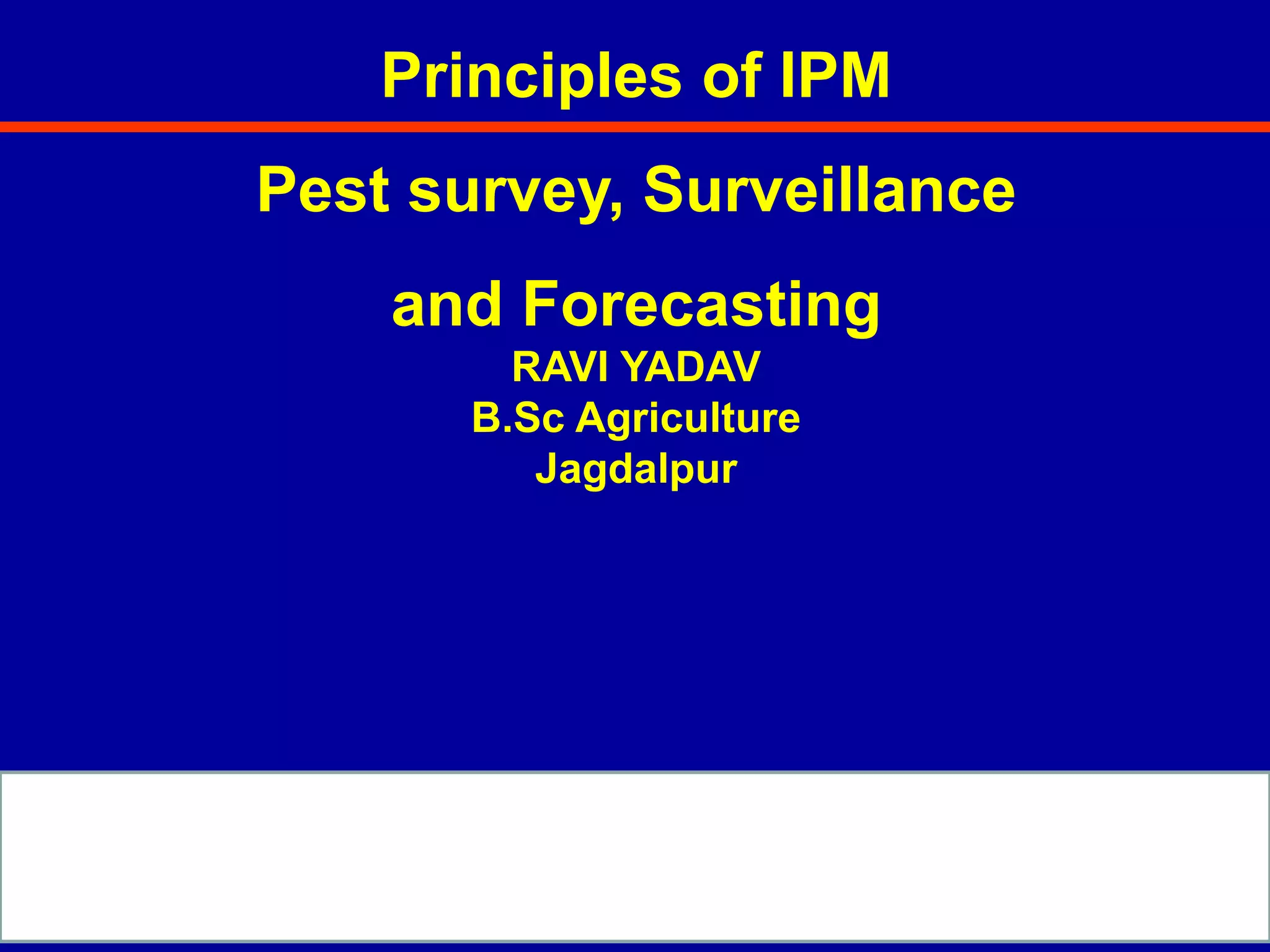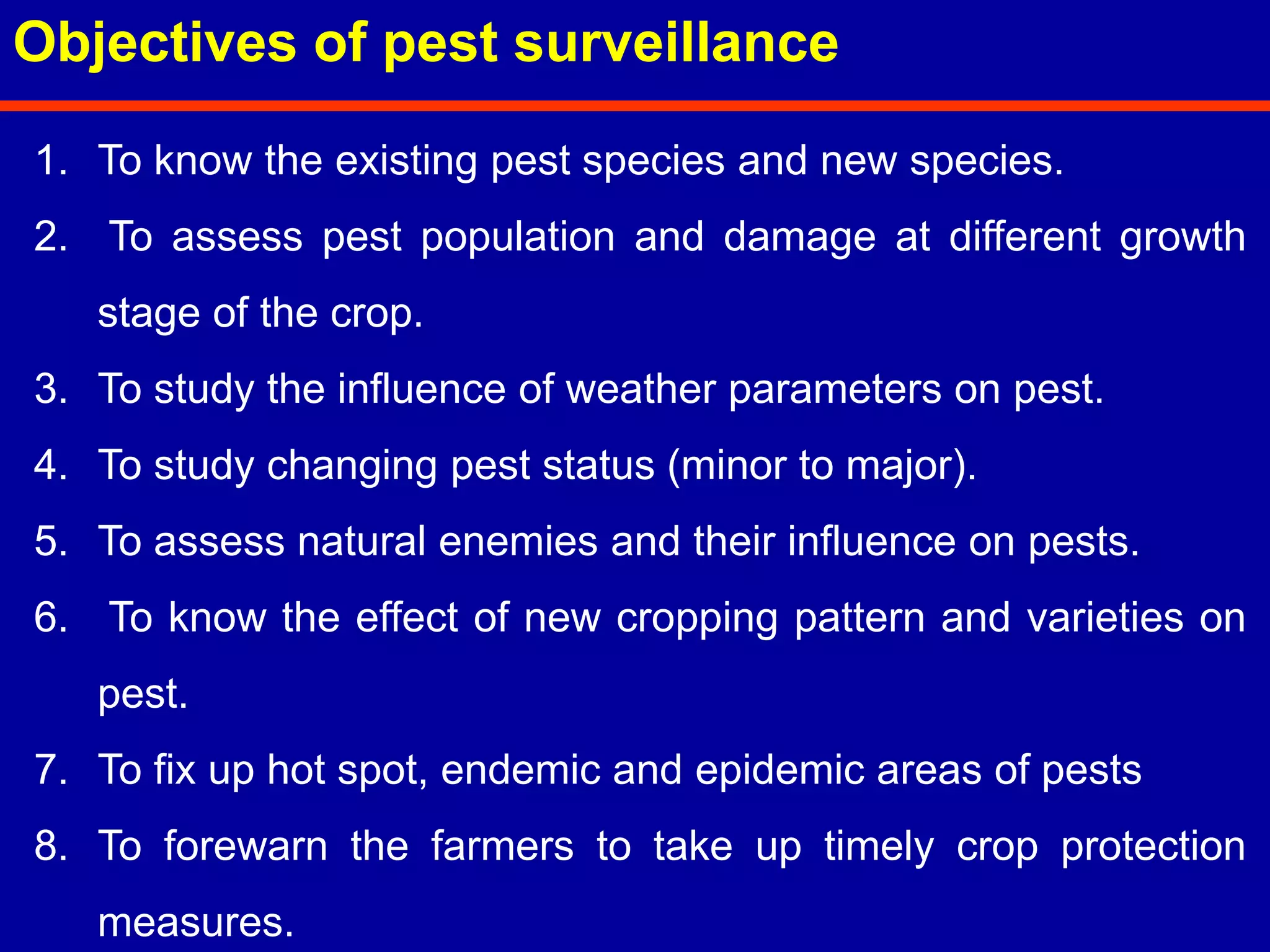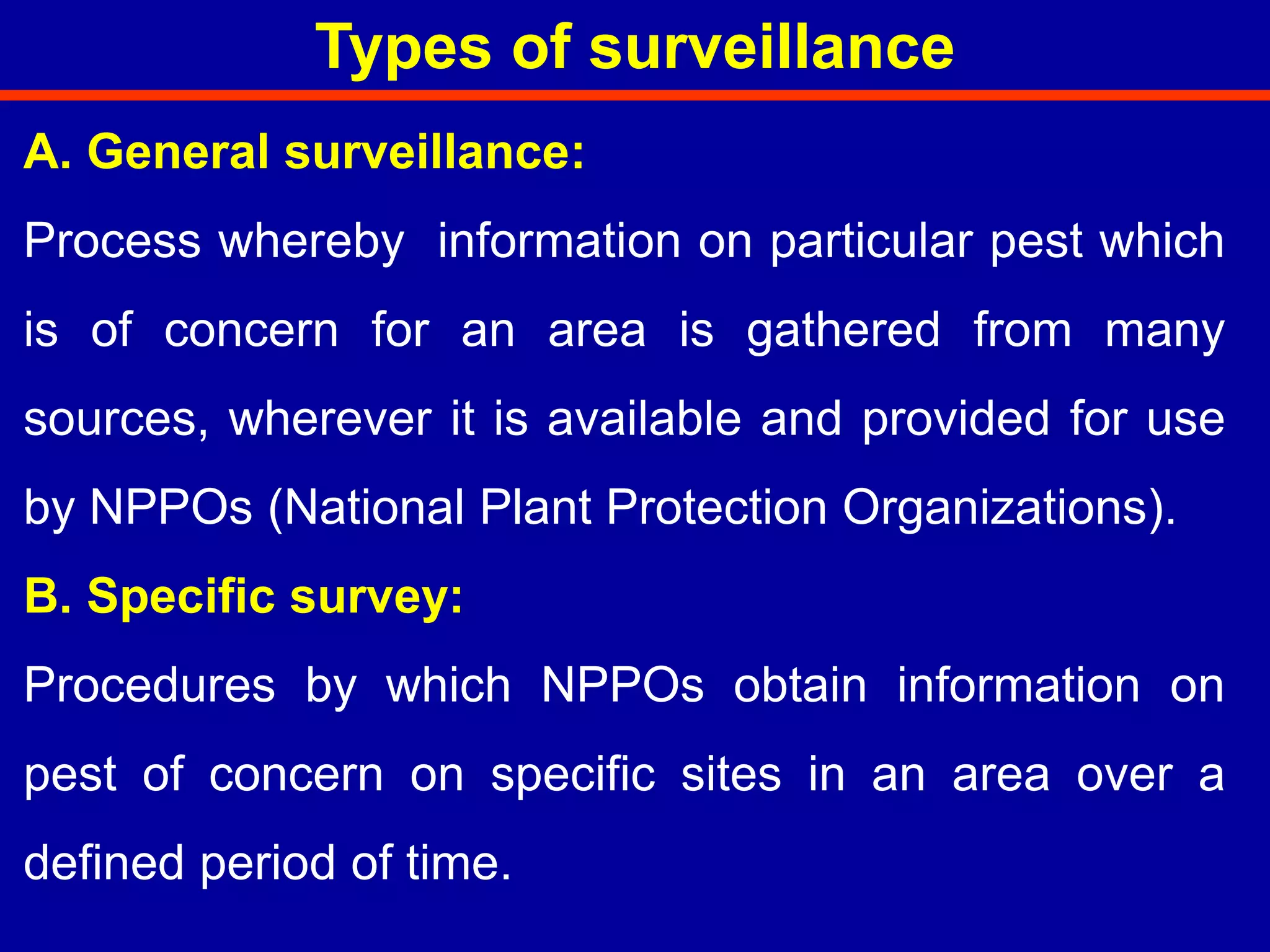Integrated Pest Management requires regular pest surveys, surveillance, and forecasting. Surveys involve collecting detailed pest population information in a given area at a particular time. Surveillance is an ongoing process to monitor pest populations and occurrences over time through methods like fixed plot surveys. This provides information on existing and new pest species, population levels, and damage. Forecasting predicts future pest infestation levels based on surveillance data and environmental factors, helping farmers time control measures appropriately. Proper pest surveys, surveillance, and forecasting are essential components of an effective IPM strategy.














